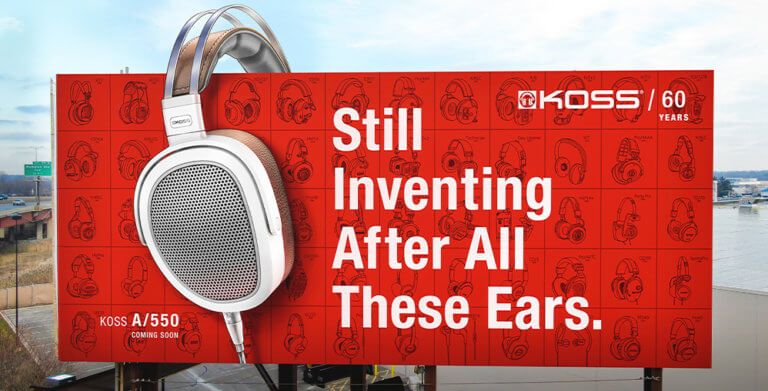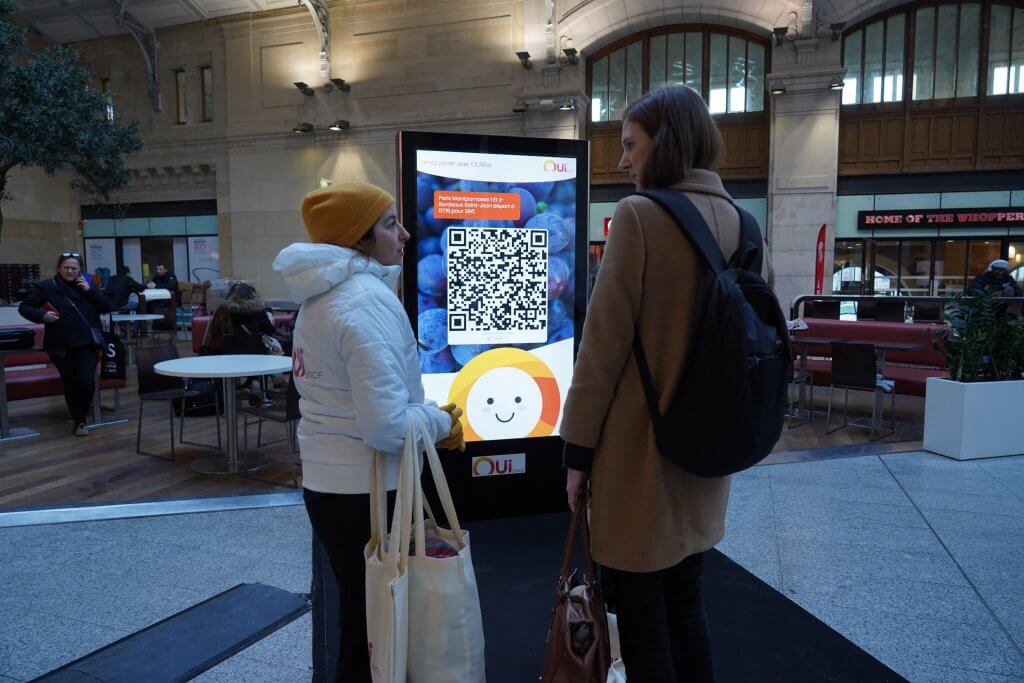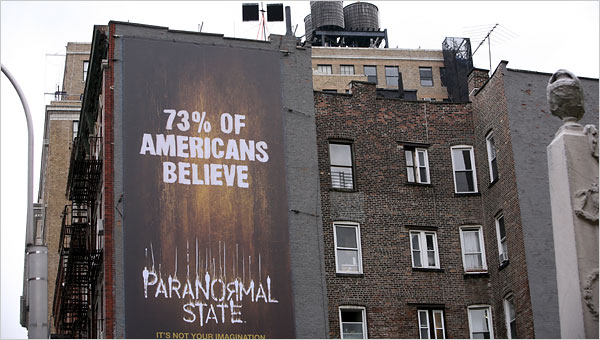
As you walk by an Out-of-Home (OOH) ad, you are bound to use at least two of the five senses (sight, smell, touch, sound and taste) when consuming the ad. The more senses an ad can stimulate, the more immersive it is. Marketers and advertisers are constantly looking for innovative ways to create campaigns that possess multi-sensory elements that can tap into our emotional, cognitive and behavioural dimensions. Brands who choose to communicate their message by appealing to more than just our visual senses, and instead combine different senses into one campaign, can better connect with consumers on a deeper emotional level. Not only does a multi-sensory experience attract a larger audience, but it allows for a unique connection with every individual consumer on a personal level. OOH audiences are generally more receptive to their environment, making them more open to interacting with the ads that interest them. Adding the element of audio gives the ads more personality, bringing them to life. This alone is sufficient enough to grab the attention of passersby and bring a whole new dimension to advertising that we never thought was possible in the past. Thanks to technological advancements, Audio Out-of-Home (AOOH) is now a platform that enables all the benefits of programmatic automation, data-driven decision-making, and measurement of results that can reach shoppers directly at the point-of-sale. In this article, we will dive deeper into why the new medium is gaining momentum and some amazing examples of brands who have already integrated it into their campaigns.
Why are AOOH Ads Buzzing?
Sound has the ability to directly impact people’s moods, emotions, and their state of mind. Considering the five senses we use to consume an ad, sound is the second most impactful mainly because of its ability to attract attention and surprise bypassers. With that in mind, as well as the rise of programmatic advertising making its way to traditional mediums like OOH and streaming platforms that are gaining popularity by the day, it was only a matter of time before the two merged to create programmatic AOOH. Vistar Media, a global software provider for Digital-Out-of-Home (DOOH), partnered with Vibenomics, a location-based AOOH advertising company, to offer AOOH with the goal to help advertisers reach consumers at the point-of-purchase. The partnership allows advertisers to purchase AOOH programmatically, either as part of an audience-driven open-exchange campaign, or through private marketplace deals. The President of AOOH at Vibenomics, Paul Brenner, stated that, “Digital Out-of-Home started to take shape ten years ago and has been accelerating these past five years as better technologies, integrations and standards emerge. Now having Audio Out-of-Home on an open exchange, we are offering the advancements that have occurred in both Digital-Out-of-Home and streaming and audio advertising.” Programmatic AOOH has many advertisers interested in using the medium to influence purchases by targeting hyper-specific audiences mainly in retail stores where the window of opportunity to influence consumers is limited – but if done right, truly rewarding. This explains the rapid growth AOOH is experiencing in recent years. According to the Interactive Advertising Bureau (IAB) review, U.S. audio and ad spending grew by 30% in the first half of 2019 to $1.2 billion. The Digital Place-Based Advertising Association (DPAA) reported in their Strategic Media Planner Survey that 61% of media planners now include DOOH in their planning with 63% relying on programmatic which will continue to grow into 2024.
Why is AOOH Effective?
1. Programmatic Technology with A Tune
What makes audio OOH so exciting is its ability to provide all the benefits programmatic technology offers but with an added value that better engages audiences. AOOH platforms make it possible for advertisers to reach their target audience at locations where they work, shop, travel, and live. By doing so, advertisers capture consumers’ attention with audio, which inevitably helps personalize the message even further. Using programmatic technology with audio elevates the ads efforts by using reporting tools that help advertisers understand the specific needs of consumers based on their demographics, time of day, and product availability.
2. Creates A Connection
What makes an advertisement truly stand out is the ability to connect with its audience on a deeper level. What creates a deeper, more personalized connection? The short answer is engaging content. AOOH has a rare advantage over the rest, which is the ability to attach itself to the artists, songs, and promotions that the ad is communicating. According to a study by MAGNA, listeners are 35% more receptive to audio ads than viewers. AOOH can provide custom-made music playlists and messages that brands can use to enhance their brand image, resonate better with their target audience, increase brand recognition, and create a memorable customer experience.
3. Happy Vibes, Happy Customers
Brands ultimately want to be associated with good emotions like happiness and joy – emotions that music alone can trigger. Combining ads with music playlists that align with consumers’ interests will only help generate these joyful emotions, which can translate into attentive listeners and unplanned purchases. What makes a customers experience more positive, is when a personalized approach is taken that actually provides a helpful hand to customers. In fact, 16% of unplanned purchases are driven by in-store promotions. When consumers are shopping in a grocery store, a relevant AOOH would be an ad for food or house goods that would compel them to take action. An audio call-to-action is more likely to be noticed and engaged with than in-store marketing materials. Brands that understand the mood behind the purchasing action are much more likely to grab the attention of listeners than those who do not. The same study by MAGNA and IPG Media Lab found that a consumer’s mood is crucial when making a purchase decision. When consumers are in a good and relaxed mood, they are more receptive to audio ads than video ads and to get consumers in that relaxed state of mind, music is an extremely effective way. In fact, Researchers at Stanford University have said that “listening to music seems to be able to change brain functioning to the same extent as medication.”
How Can AOOH be Heard?
With technological advancements in voice assistants on smart devices and real-time interactive digital screens, the sky’s the limit for creating any atmosphere a brand wants to transport its audiences to. The simplest and most common way a brand can integrate sound into their OOH campaign, is to set up speakers. When trying to create a more personalized one-on-one experience, emitting sound from headphones is a better option. However, the ultimate way to engage a large audience would be through a multi-sensory experience that combines digital screens and audio-visual content where an action is required by the passersby in order for the panel to be activated. In this way, the engagement rate is even higher as consumers get to be part of the experience through motion sensors that ensure consumer’s attention is fully focused on the content presented. Motion sensors linked with audio also presents an opportunity to incorporate the element of surprise, which is always a fun and interesting approach. This is especially true when the goal is to increase consumer recall, which is most likely to occur when the experience is most memorable.
Listen to Your Conscious – In-Store Audio Spotlight
Ogilvy and All Good Fair-Trade Bananas used Audio Spotlight directional speakers to promote the brand in New Zealand supermarkets. The genius idea was not to use the speakers to address the masses, but instead, the audio was heard only by those who were standing directly on the point in front of the banana stand. The purpose was to deliver the message to shoppers in a way that resembled the voice in their head – that being their conscience. As a result, sales increased over 130% during the campaign.
OUIbot, The Friendly Bot
Another innovative way to engage with consumers that is more technologically advanced, is by incorporating Artificial Intelligence (AI) such as OUIbot, which allow brands to integrate their digital and OOH strategies by connecting their audiences and the ad through their smartphone.

JCDecaux’s La Rue, an outdoor event and experiential advertising department, used JCDecaux digital screens to create a virtual travel assistant that goes by the name, OUIbot. OUIbot made its debut in the train stations of Paris in 2019 to act as a personalized ticketing agent specializing in customer service. Passengers were invited by OUIbot to guide them by finding and booking their tickets while adding a touch of fun and humor to the encounter. As a result, more than 100,000 people communicated with OUIbot and many other virtual assistants are following in the same path. Welcome to the future!
The Mountains are Calling – Tourism Campaign
Just as audio can play a part in virtual AI’s assisting customers in a faster and more efficient way, ads can work in a similar way. For tourism brands, sound can help create an atmosphere that immerses passersby into whatever culture they can think of, enticing them to take the leap and book a trip.
This was the case for the tourism marketing campaign that promoted the Swiss region, Graubünden. An interactive digital screen set in Zurich Central Station displayed an onscreen virtual call with a man sitting in the mountains of Graubünden as he asked passersby to give their best yodel for a chance to win a vacation to the mountain town. Although the visuals definitely helped create the full experience, the audio was what made the ad so unique. If the greetings of the man weren’t enough to shock people into taking notice, the yodeling sure did the trick!
It’s Not Your Imagination – Paranormal State Billboard
Another industry that is all about experiential marketing is the film industry. What better way to promote a film or series than to completely immerse passersby into the plot of the film with sound effects that are just too awesome to ignore.

A large eerie-looking billboard was erected on a building in New York City to promote the television series, ‘Paranormal State’. However, the visuals of the billboard were not the show-stopper of the campaign, the creepy whispers of a female voice saying, “Who’s there? It’s not your imagination,” were what made passersby stop, or in this case, keep walking. The billboard used a kind of technological device called directional audio, where the speakers use ultrasound to create a high-beam of sound focused in on one area, making those close to it hear it as clearly as though they were wearing headphones. The purpose was to create the effect that the passersby are the only ones who can hear the whispers. Freaky much?
Lifting Spirits With Music – Lyft Campaign
As mentioned earlier, music has a strong power over our emotions and can drastically change our moods. Faster music can make us feel more alert and concentrate better. Upbeat music can make us feel more optimistic and positive about life. A slower tempo can quiet our mind and relax our muscles and release stress. Incorporating music into an ad campaign can direct the emotions of consumers towards what the brand message wants to convey or be associated with.
Lyft decided to use music to elevate emotions of joy and celebration, giving consumers a memorable experience and a genuine good time. To celebrate the biggest music weekend of the year in 2017, they surprised passersby with a show-stopping musical performance in New York City, using the sounds of several car alarms that orchestrated into one of 2017’s most popular songs, Despacito.
The Bottom Line
Audio can be used to promote any type of business in many different ways for a variety of purposes and to fit any environment that the brand desires. Incorporating audio into an OOH campaign, whether it’s through music, live audio, sound effects, or virtual assistance, there is no doubt that the more senses being used to consume an ad, the more engaging and impactful it will be. Additionally, the benefits that AOOH provides go beyond creativity and powerful engagement and embrace the digital age that is amongst us. AOOH allows advertisers to utilize programmatic advertising to reach the targeted audience at the right time, measure its efforts, and provide a memorable experience all at once. Sounds like a win-win!


